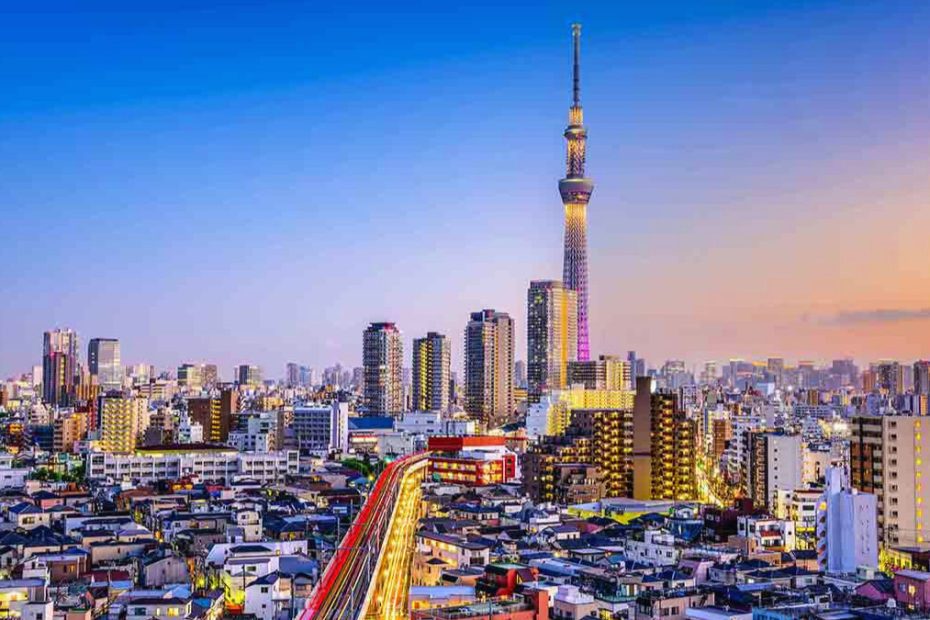Tokyo’s a city that never fails to amaze. With its blend of cutting-edge technology and deep-rooted traditions, there’s something for everyone. Planning an 8-day itinerary might seem overwhelming, but I’ve got you covered.
From the bustling streets of Shibuya to the serene temples of Asakusa, I’ll guide you through the must-see spots and hidden gems. Whether you’re a foodie, history buff, or shopaholic, this itinerary ensures you experience the best Tokyo has to offer.
Key Takeaways
- Day-by-Day Itinerary Breakdown: The article provides a detailed, day-by-day itinerary, guiding tourists through must-visit spots and hidden gems in Tokyo over 8 days. This helps travelers maximize their experience without feeling overwhelmed.
- Cultural and Modern Attractions: Highlights include a mix of traditional sites such as Senso-ji Temple and Meiji Shrine, alongside modern attractions like TeamLab Borderless and Odaiba Seaside Park, giving travelers a well-rounded Tokyo experience.
- Diverse Activities for All Interests: Whether you’re into history, shopping, or food, the itinerary covers diverse activities like exploring the high-energy Shibuya Crossing, shopping in Ginza, and sampling street food at Tsukiji Market.
- Nature Escapes within the City: Travelers are also guided to natural retreats like Shinjuku Gyoen National Garden and Hamarikyu Gardens, offering peaceful breaks from the bustling city life.
- Practical Travel Tips: Details such as transportation options from the airport, portable Wi-Fi rental, and hints for navigating Tokyo’s transit system make it easier for readers to plan their trip.
- Day Trip Recommendations: The itinerary includes a recommended day trip to Nikko, providing a cultural and historical contrast to the urban environment of Tokyo.
Day 1: Arrival And Orientation
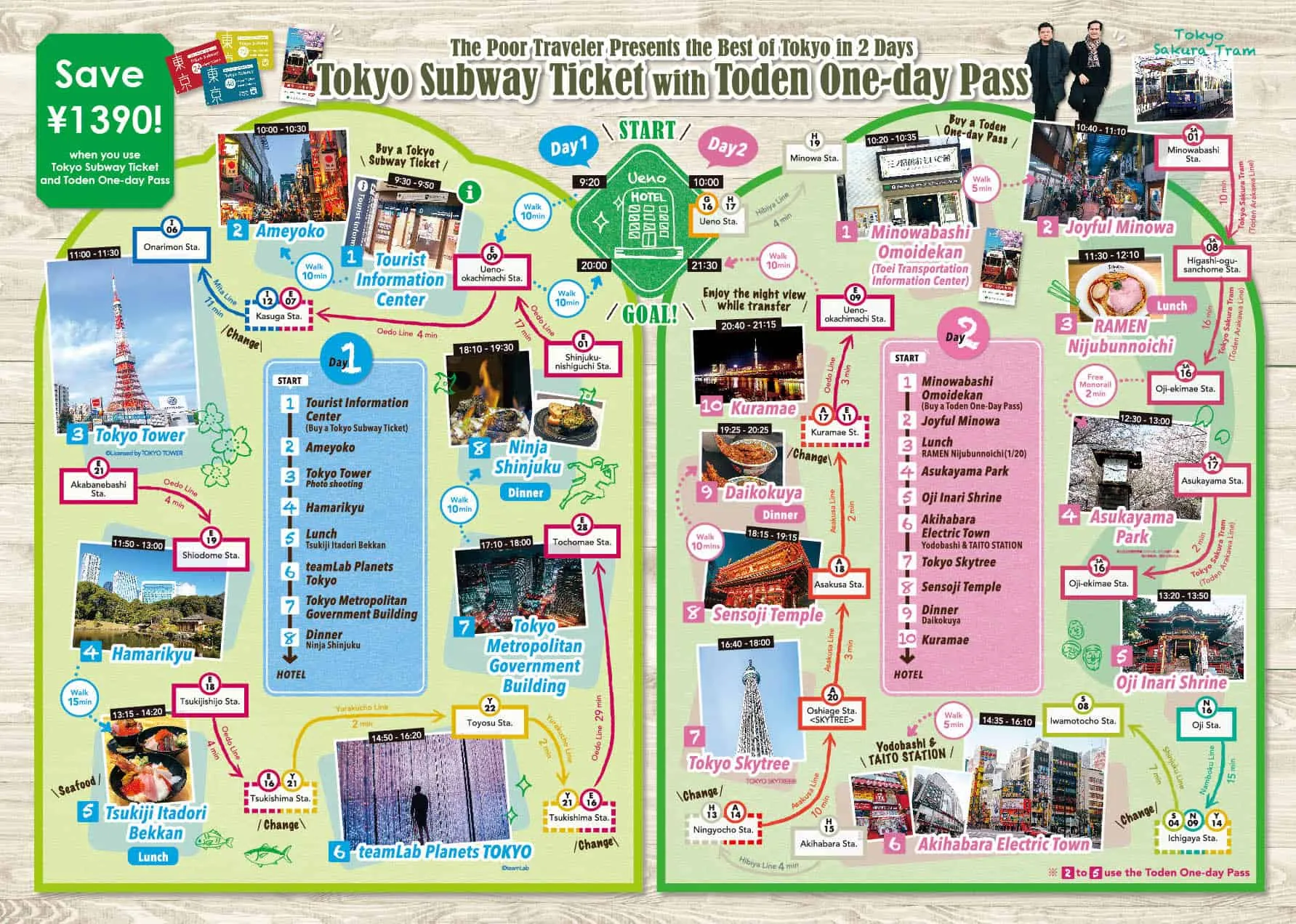
Exploring Narita/Haneda Airport
Arrive at either Narita or Haneda Airport, ready for an exciting journey ahead. At Narita, options include taking the Limousine Bus to Tokyo Station (1 hour, ¥2,500) or the Keisei Bus (1 hour, ¥1,000). Both offer convenient and comfortable services.
From Haneda, hop on the Tokyo Monorail to Hamamatsucho Station (15 minutes, ¥500), then transfer to the JR Yamanote Line to reach Tokyo Station. This route is quicker, making it ideal for those eager to start their Tokyo adventure.
Renting a portable Wi-Fi router at the airport ensures connectivity throughout the trip. Costs hover around ¥900 per day for unlimited data, a small price for the convenience it provides. Grab a bite either at the airport with familiar options like McDonald’s or dive straight into Tokyo’s culinary scene upon arrival.
First Impressions Of Tokyo
Step into Tokyo and feel the city’s vibrant energy. The journey to your accommodation via the JR Yamanote Line or other trains (30 minutes to 1 hour, ¥200-¥400) offers a glimpse of the seamless integration between modern architecture and lush green spaces.
Everything feels meticulously organized yet bustling with life. Exploring the transit system becomes an adventure itself, with clear signage and punctual services. Notice how even the busiest stations maintain an impressive level of cleanliness and efficiency, reflecting Tokyo’s high standards.
Upon reaching your accommodation, you’re welcomed by a mix of traditional and contemporary aesthetics. The hospitality is warm, making you instantly feel at home. These first impressions set a promising tone for the rest of your Tokyo exploration, blending excitement with comfort.
Day 2: Exploring Shibuya And Shinjuku
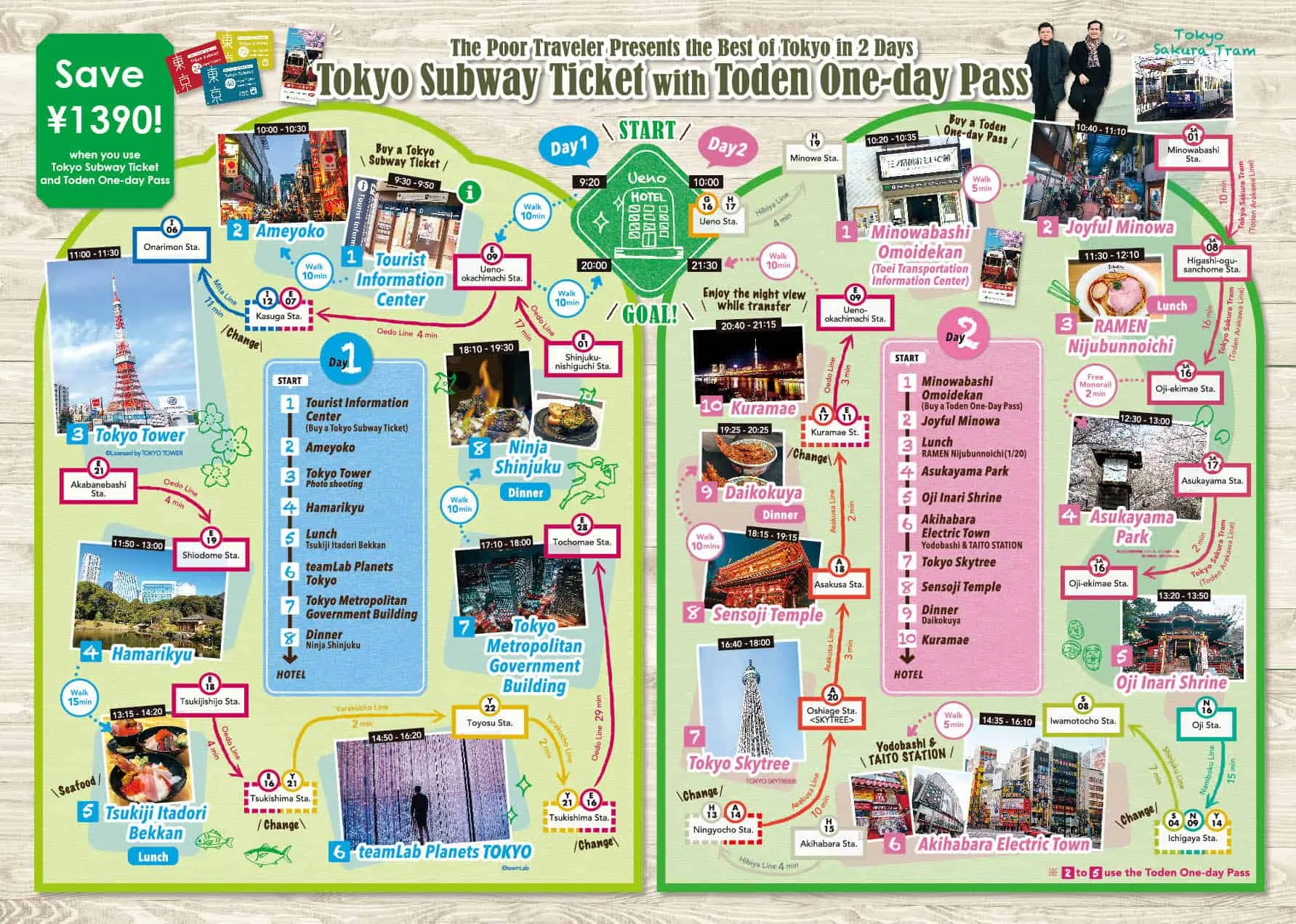
Day 2 starts with both Shibuya and Shinjuku, two iconic districts in Tokyo. These vibrant areas offer a mix of bustling energy and tranquil spots to explore.
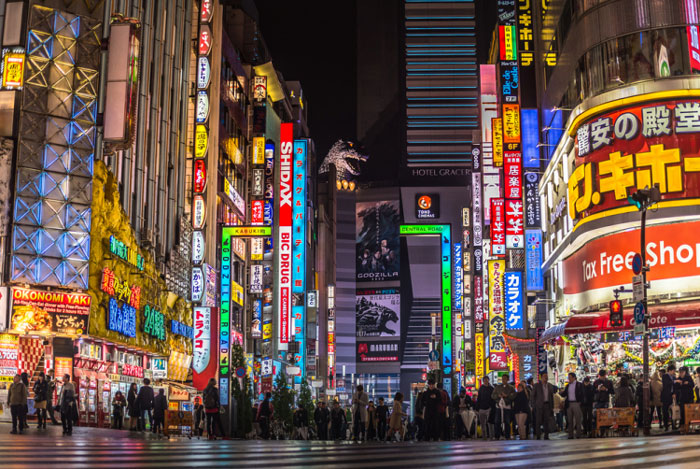
Shibuya Crossing
I begin my day by visiting Shibuya Crossing, one of the busiest intersections worldwide. This spot encapsulates Tokyo’s bustling urban environment. As I walk around Shibuya, the vibrant energy of the area is palpable. Digital billboards and streams of people create a unique atmosphere.
Next to Shibuya Crossing, the Statue of Hachiko stands proudly. This statue commemorates the loyal Akita dog, Hachiko, who waited for his owner daily at Shibuya Station for years. Hachiko’s story is a touching reminder of loyalty and love, making this statue a popular photo spot.
The Shibuya area itself offers an array of activities. Popular shopping districts like Shibuya 109 house numerous fashion stores. Cafes and eateries are plentiful, allowing me to enjoy a taste of modern Tokyo cuisine. Also, exploring smaller streets reveals unique boutiques and hidden gems.
Meiji Shrine
From Shibuya, I take the JR Yamanote Line to Harajuku Station, just two stops away. A short walk from the station leads me to Meiji Shrine. This imperial shrine is a tranquil retreat amidst the city’s fast pace. Walking through the torii gates, I find myself surrounded by a serene forest.
Inside the grounds, the famous wall of sake casks draws my attention. These casks symbolize the offering of sake to the deities and represent donations from breweries across Japan. The main shrine building offers a peaceful place for reflection and prayer.
Meiji Shrine also hosts traditional events and festivals, providing glimpses into Japan’s rich cultural heritage. A visit here offers a stark contrast to Shibuya’s hustle, highlighting Tokyo’s blend of old and new.
Shinjuku Gyoen National Garden
After Meiji Shrine, I head back to the JR Yamanote Line and travel two stops to Shinjuku Station. My destination is Shinjuku Gyoen National Garden, a short walk from the station. This expansive garden offers a peaceful escape within the urban jungle of Tokyo.
Featuring diverse landscapes, the garden includes traditional Japanese, English, and French gardens. Each area has unique elements, from manicured lawns to vibrant seasonal flowers. The Japanese garden, with its ponds and bridges, exudes tranquility.
Strolling through Shinjuku Gyoen, I find a variety of sights, such as the greenhouse housing tropical plants. During cherry blossom season, the park becomes a hotspot for hanami, cherry blossom viewing. Shinjuku Gyoen serves as a relaxing end to my day, showcasing Tokyo’s natural beauty amidst its bustling cityscape.
Day 3: Cultural Immersion In Asakusa And Ueno
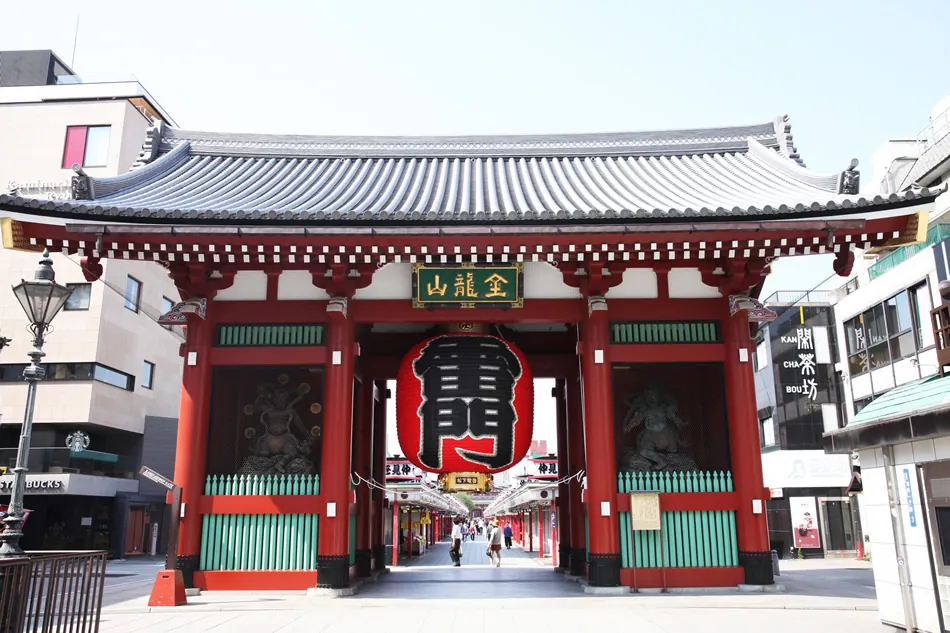
Day 3 brings a blend of historical and modern experiences as I immerse myself in the cultural landmarks of Asakusa and Ueno.
Senso-ji Temple
I began my morning by arriving at Asakusa Station and walking a short distance to Nakamise Dori. This historic shopping street, lined with stalls offering traditional snacks and souvenirs, leads to one of Tokyo’s most iconic temples, Senso-ji Temple. Established in 645 AD, it’s Tokyo’s oldest temple. The entrance, marked by the Kaminarimon Gate with its enormous lantern, sets a grand tone. Inside, I admired the five-storied pagoda and the main hall’s intricate architecture. Visitors often cleanse themselves at the purification fountain before entering the temple, adding to the spiritual atmosphere. The well-preserved grounds, bustling with worshippers and curious tourists, provide an excellent glimpse into Japanese religious practices and tradition.
Ueno Park
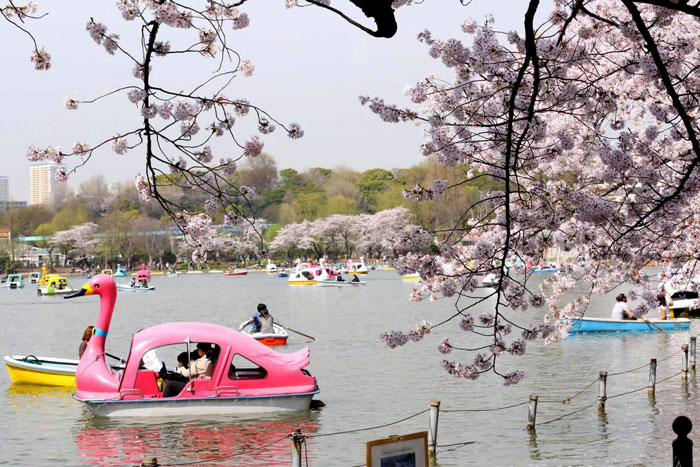
Next, I strolled to Sumida Park, an ideal spot for photography with scenic views along the Sumida River. Afterward, another short walk brought me to Ueno Park, a sprawling urban green space. Known for its cherry blossoms in spring, Ueno Park offers tranquility with its ponds and walkways. Among its many attractions is the Tokyo National Museum, housing over 110,000 artifacts, including samurai swords, ceramics, and ancient treasures. The park also features the Ueno Zoo and several other museums. Each corner of the park offers something new, making it a perfect spot for a leisurely afternoon.
Ameya-Yokocho Market
Lunchtime took me to Ameya-Yokocho Market, located just a short walk from Ueno Park. This bustling open-air market, also known as “Ameyoko,” is famous for its vibrant atmosphere and diverse food offerings. I sampled street foods like yakitori (grilled chicken skewers), takoyaki (octopus balls), and a variety of fresh seafood. The market stalls also sell clothes, cosmetics, and other goods, creating a lively environment. The mix of aromas, sights, and sounds makes Ameya-Yokocho a sensory delight, offering a taste of Tokyo’s local life and culinary diversity.
Day 4: Modern Tokyo In Odaiba And Roppongi
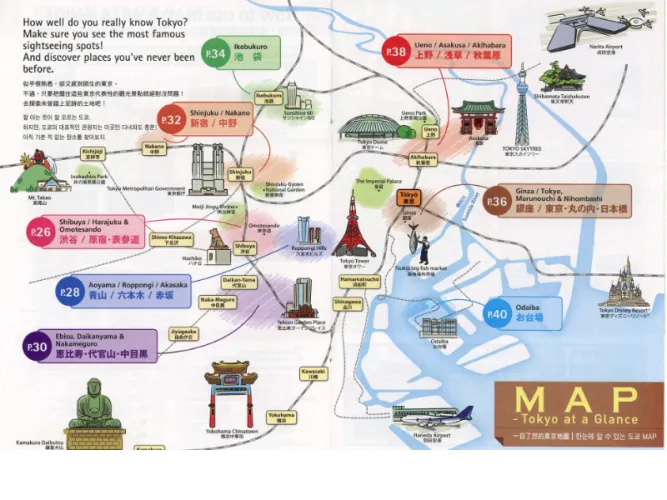
Day 4 of my Tokyo itinerary focuses on the modern attractions in Odaiba and Roppongi. These neighborhoods offer a blend of futuristic entertainment, spectacular views, and contemporary art.
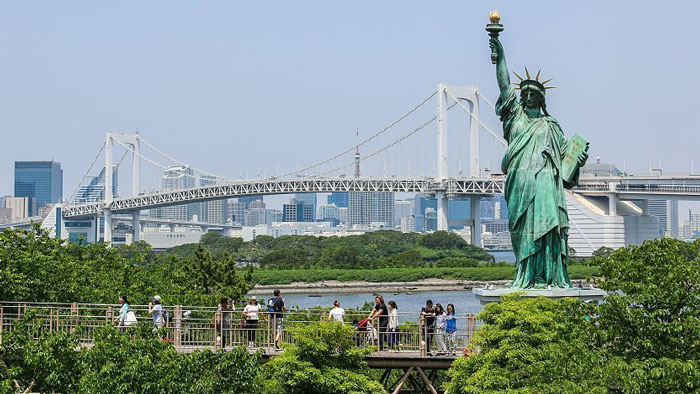
Odaiba Seaside Park
I start my day at Odaiba Seaside Park, a man-made island in Tokyo Bay. This park is famous for its futuristic high-tech entertainment and museum hub. Walking along the beach, I enjoy the stunning views of Tokyo Bay and the city’s skyline. The park also has a replica of the Statue of Liberty, which adds a unique charm to the place.
The area boasts attractions like the futuristic Fuji TV Building and the iconic Rainbow Bridge. The wide open spaces and pleasant seafront atmosphere make it an excellent spot for relaxing walks or beach games. If you’re visiting with family, the attractions cater to all age groups, ensuring everyone finds something interesting.
TeamLab Borderless
Next, I head to TeamLab Borderless, a renowned digital art museum in Odaiba. This museum hosts interactive and immersive art installations that blur the lines between art and viewers. Booking tickets in advance is essential to avoid long queues.
Inside, I experience a world where displays transform based on my movements and interaction. Infinitive Crystal Universe is a highlight, featuring lights that create a feeling of infinite space. The Forest of Resonating Lamps offers another magical experience; it feels like stepping into another dimension as lights change with your touch. TeamLab Borderless redefines art through technology, creating unforgettable experiences.
Roppongi Hills and Mori Art Museum
After lunch, I continue to Roppongi Hills, a popular shopping and entertainment complex. This area is a buzzing hub that blends high-end retail, dining, and leisure activities. The Roppongi Hills complex offers something for everyone, from luxury brands to casual eateries. I spend some time exploring the shops and enjoying the bustling atmosphere.
I then visit the Mori Art Museum, located on the 53rd floor of the Mori Tower. This museum features contemporary art exhibitions that showcase a diverse range of artists and mediums. The Sky Deck provides panoramic views of Tokyo, especially breathtaking at sunset when the city’s lights begin to twinkle. The combination of art and skyline views creates a unique cultural experience that’s hard to find elsewhere.
Day 5: Traditional Sights In Harajuku And Akihabara
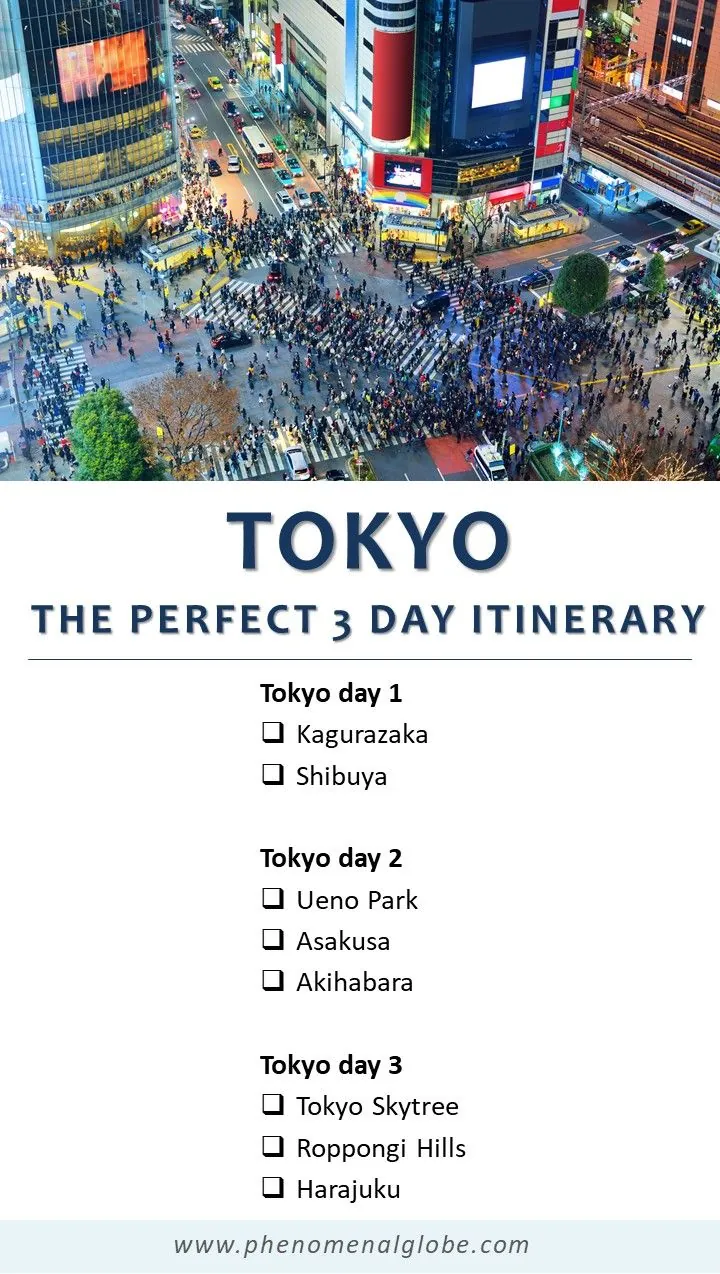
Day 5 in Tokyo combines the vibrant youth culture of Harajuku with the bustling electronics district of Akihabara. This plan blends shopping, traditional sights, and unique experiences.
Takeshita Street
I started my day in Harajuku at Takeshita Street, a buzzing pedestrian street famous for its fashion-forward boutiques. From trendy clothing stores to quirky accessories shops, it felt like I stepped into the heart of Tokyo’s youth culture. Local cafes offered a range of unique snacks; I couldn’t resist trying the famous crepes topped with whipped cream and fresh fruits. Brightly colored shops and the energy of young shoppers created a lively atmosphere. Takeshita Street perfectly captured the essence of contemporary Harajuku, making it a must-visit for anyone interested in fashion trends.
Akihabara Electric Town
In the afternoon, I headed to Akihabara, the ultimate destination for electronics and anime enthusiasts. At Yodobashi Camera, a massive electronics store, I found a vast selection of gadgets from cameras to home appliances. The variety was overwhelming but impressive. Exploring the surrounding shops, I discovered countless arcades, manga stores, and anime merchandise. Gamers and collectors would find this area particularly exciting. The themed cafes, especially the maid cafes, added a uniquely Akihabara twist to the experience. Overall, Akihabara Electric Town provided an unparalleled mix of technology and pop culture.
Kanda Myojin Shrine
A short walk from Akihabara led me to Kanda Myojin Shrine, an oasis of tranquility amidst the urban hustle. This historic Shinto shrine, with its ornate architecture and serene atmosphere, offered a peaceful retreat. I observed the traditional rituals and took in the intricate details of the shrine’s structures. It’s a popular spot for locals seeking blessings for business success and protection from disasters. Rich in history and culture, Kanda Myojin Shrine stood in stark contrast to the high-energy vibe of Akihabara, providing a perfect end to my day filled with diverse experiences.
Day 6: Day Trip To Nikko
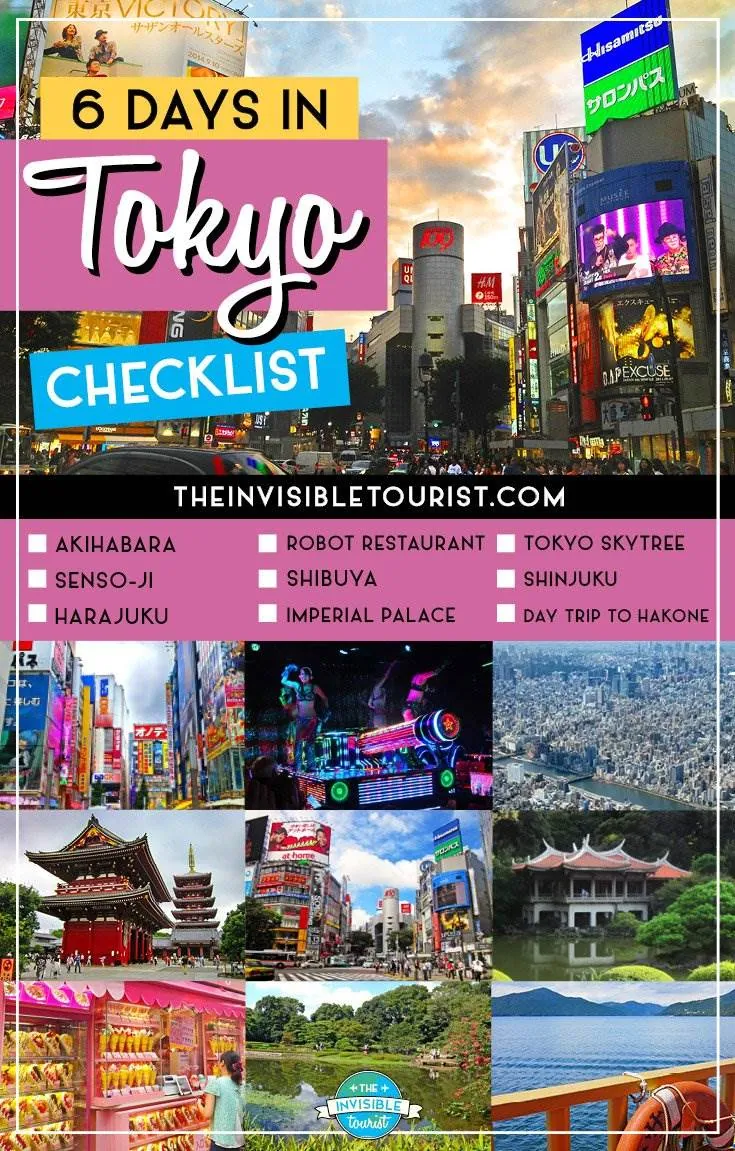
Day 6 of my Tokyo itinerary includes a one-day trip to Nikko, an important cultural site surrounded by pristine nature. Located about two hours north of Tokyo, Nikko offers a mix of historical landmarks and scenic beauty.
Toshogu Shrine
I started my visit with Toshogu Shrine, a UNESCO World Heritage site and the final resting place of Tokugawa Ieyasu, the founder of the Tokugawa Shogunate. The shrine’s elaborate design, including numerous carvings and gold leaf decorations, provides a stark contrast to the minimalist aesthetics of many other Japanese temples. Key highlights include the Yomeimon Gate, often called the “Gate of Sunlight” for its intricate beauty, and the famous “Sleeping Cat” carving attributed to renowned artist Hidari Jingoro. It’s essential to allocate at least a couple of hours here to fully appreciate the rich history and artistry.
Shinkyo Bridge
After Toshogu Shrine, I made my way to Shinkyo Bridge, a stunning red-painted bridge that spans the Daiya River. Known as one of Japan’s three finest bridges, Shinkyo offers an excellent photo opportunity. Historically, it’s said that only the Shogun was permitted to use the bridge, making it a significant symbol of power and prestige. Though visitors can’t walk on the bridge, there are viewing platforms that provide perfect angles for photography. The bridge appears particularly striking against the backdrop of the lush greenery, adding a serene charm to the scene.
Lake Chuzenji
I wrapped up my day at Lake Chuzenji, a serene lake located at the foot of Mount Nantai. Formed over 20,000 years ago when the volcano erupted, the lake’s clear waters and surrounding mountains offer a tranquil escape from Tokyo’s bustling city life. I took a boat cruise to explore the lake and enjoy the views of Kegon Falls, one of Japan’s most famous waterfalls, which plunges 97 meters into the lake below. For those who prefer hiking, the area around Lake Chuzenji has several well-maintained trails that offer stunning vistas of the world.
Day 7: Shopping In Ginza And Exploring Tsukiji
Ginza District
I’ve dedicated the morning to exploring the sophisticated Ginza district, renowned for its upscale shopping experience. The district’s modern architecture and wide sidewalks make it a delightful place to stroll and discover luxury brands. Ginza is home to famous department stores such as Mitsukoshi and Printemps Ginza, where I can find a variety of high-end fashion and designer boutiques. These stores offer a range of products, from clothing to cosmetics, providing a comprehensive shopping experience.
Plus to shopping, Ginza has numerous art galleries and cafes. Visiting a gallery or relaxing in a café adds a cultured touch to my morning. The district’s blend of modernity and tradition is evident in places like Kabuki-za Theatre, where one can catch a traditional Kabuki performance if time permits. Walking around Ginza, I’m struck by how the area seamlessly combines the latest trends with rich cultural experiences.
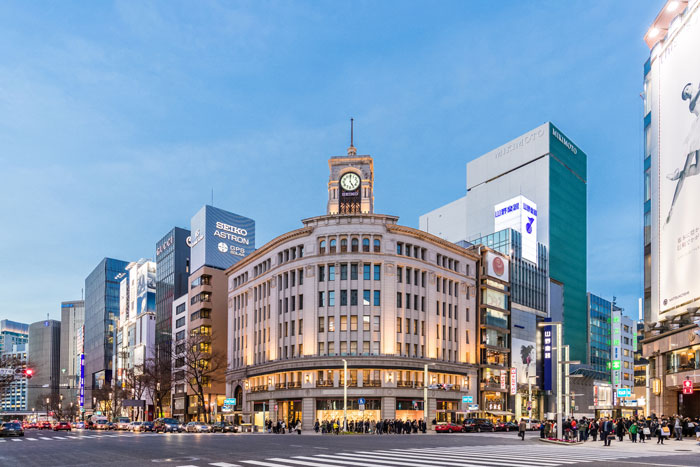
Tsukiji Outer Market
After lunch, I head to the Tsukiji Outer Market, known worldwide for its fresh seafood and vibrant atmosphere. As one of the largest fish markets globally, Tsukiji offers a sensory overload with its myriad stalls selling everything from fresh fish to pickled vegetables. It’s an ideal place to sample some of the freshest sushi in Tokyo. The market’s bustling energy and diverse offerings make it a must-visit destination for food lovers.
Plus to seafood, Tsukiji has food stalls selling other local favorites. I can savor street foods like tamagoyaki (Japanese omelette) and grilled seafood skewers. The market also has various kitchenware shops, perfect for picking up unique culinary tools and souvenirs. Walking through the market, I appreciate the blend of traditional and contemporary elements that characterize Tokyo’s gastronomic scene.
Hamarikyu Gardens
A short walk from Tsukiji, Hamarikyu Gardens provides a tranquil escape from the urban hustle. This former Imperial family duck hunting ground now serves as a public park, offering a peaceful retreat in the city. The garden’s meticulously landscaped grounds feature traditional Japanese garden elements, such as a tidal pond and tea house.
As I stroll through Hamarikyu Gardens, I’m captivated by the serene beauty and historical significance of the place. The garden’s tidal pond, which changes water levels with the tide, adds a unique touch to the scenery. Stopping at the tea house, I enjoy a traditional Japanese tea ceremony, immersing myself in the calming environment. The contrast between the garden’s tranquility and the city’s bustling energy highlights the diverse experiences Tokyo offers.
Day 8: Relaxation And Departure
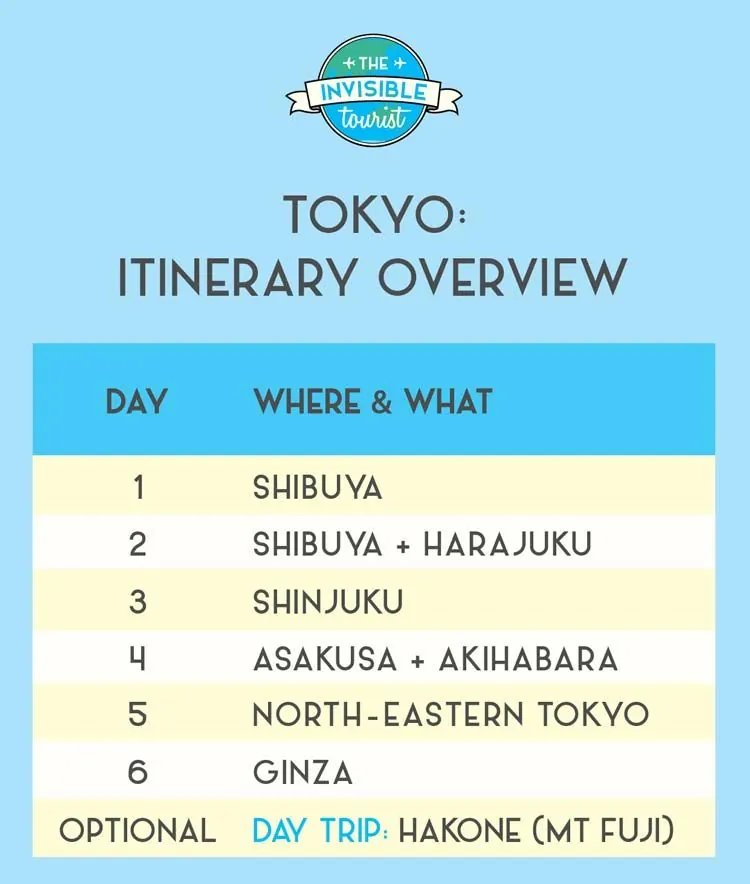
Oedo Onsen Monogatari
I start my day at Oedo Onsen Monogatari, a large onsen theme park in Odaiba. This attraction offers various hot springs and baths, both indoor and outdoor, perfect for unwinding after a week of exploring. I enjoy the different themed baths, like the aromatic bath and the outdoor foot bath, while also trying traditional Japanese massages. There’s a dining area within the park where I sample local cuisine, enhancing the relaxation experience.
Last-minute Shopping
Later, I head to a nearby shopping district for last-minute shopping. I visit Diver City Tokyo Plaza in Odaiba, which houses a variety of stores offering everything from anime merchandise to fashion brands. My personal favorite is the Gundam Base, where I pick up model kits and exclusive items. For unique souvenirs, I stop by VenusFort, a shopping mall designed to look like a medieval European town. Both places offer tax-free shopping options, making it easy to get good deals.
Preparing For Departure
I return to my hotel to pack and prepare for my departure. I make sure to organize my luggage, ensuring all delicate items are well-protected. I also check my flight details from Haneda Airport, confirming my transportation to the airport. To avoid last-minute hassles, I opt for a direct airport transfer service from Asakusa, guaranteeing a smooth journey back. Finally, I double-check that I’ve not left behind any important documents or items in my room.
Conclusion
My 8-day Tokyo itinerary offers a perfect blend of modern attractions and traditional experiences. From upscale shopping in Ginza to the culinary delights of Tsukiji and the serene beauty of Hamarikyu Gardens, every day brings something unique. Ending the trip with a relaxing visit to Oedo Onsen Monogatari and last-minute shopping in Odaiba ensures a memorable conclusion.
Don’t forget to plan your departure meticulously, including packing and confirming flight details. Opt for a direct airport transfer from Asakusa to Haneda Airport for a hassle-free journey home. This itinerary ensures you make the most of your Tokyo adventure, leaving you with unforgettable memories and a longing to return.
Frequently Asked Questions
What can I expect to see in Ginza on Day 7?
Ginza is known for its upscale shopping, featuring international and local luxury brands, as well as fine dining options and impressive architecture.
Are there any specific dishes to try in Tsukiji?
Yes, Tsukiji is famous for its fresh seafood, sushi, and street food stalls offering a variety of traditional Japanese snacks.
What makes Hamarikyu Gardens worth visiting?
Hamarikyu Gardens offer a serene escape with beautiful landscapes, traditional tea houses, and a rich history that dates back to the Edo period.
How can I relax at Oedo Onsen Monogatari in Odaiba?
Oedo Onsen Monogatari provides hot springs, traditional massages, and relaxation zones to rejuvenate you.
Where can I shop for unique souvenirs in Odaiba?
Diver City Tokyo Plaza and VenusFort are great spots for last-minute, unique souvenirs, offering a variety of items from quirky to traditional.
What steps should I take to prepare for departure from Tokyo on Day 8?
Ensure packing is complete, confirm flight details from Haneda Airport, and consider using a direct airport transfer service from Asakusa for a smooth journey.
How do I get a direct airport transfer service from Asakusa to Haneda Airport?
You can pre-book a direct airport transfer service online or through your accommodation to ensure a hassle-free departure from Tokyo.

